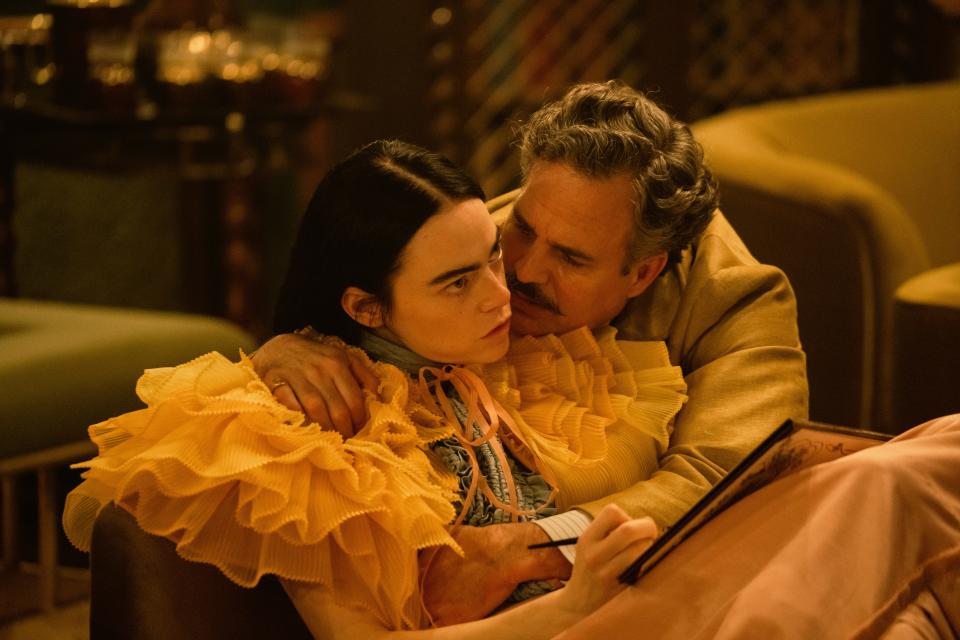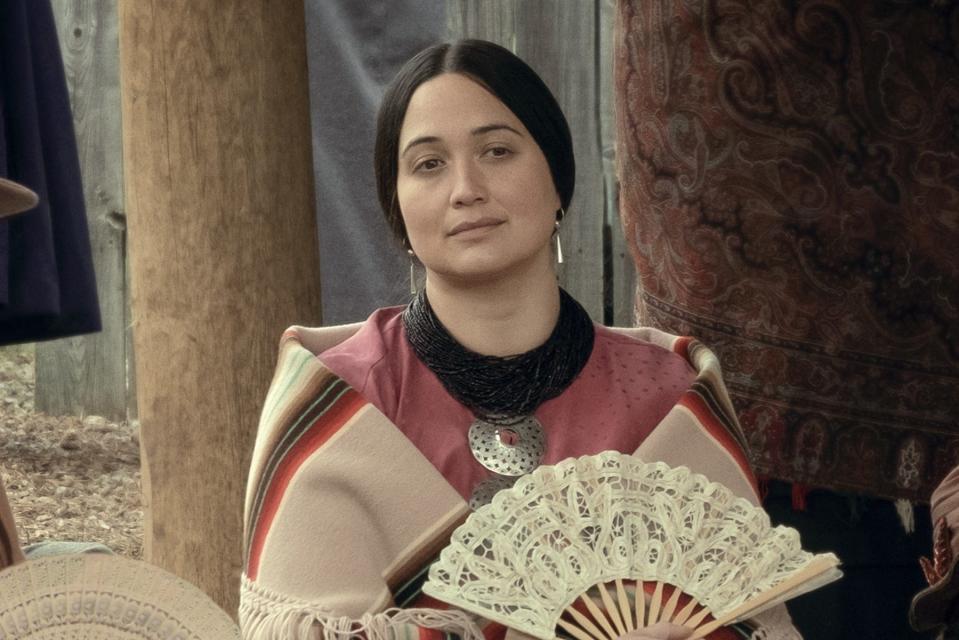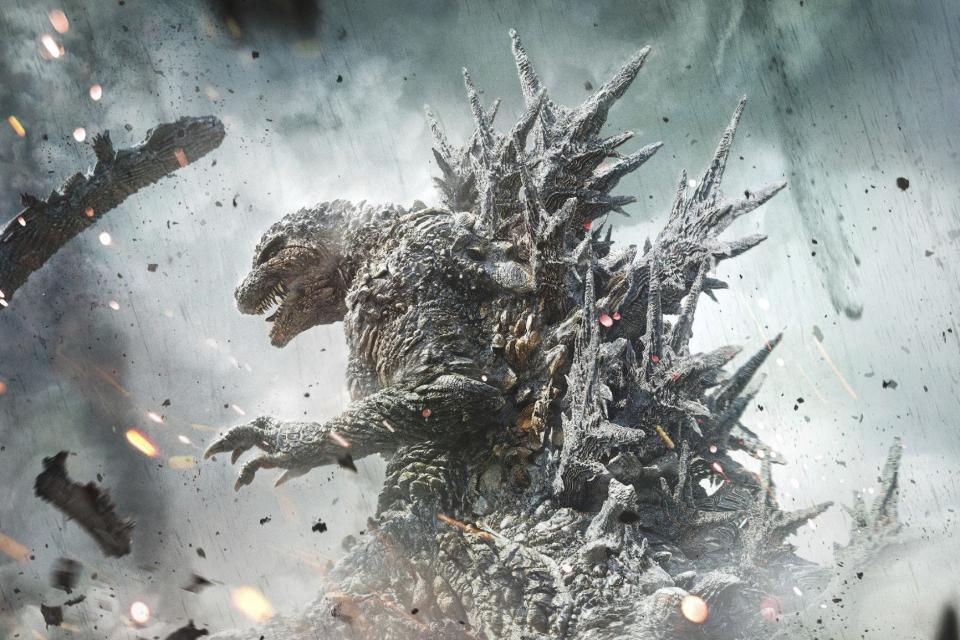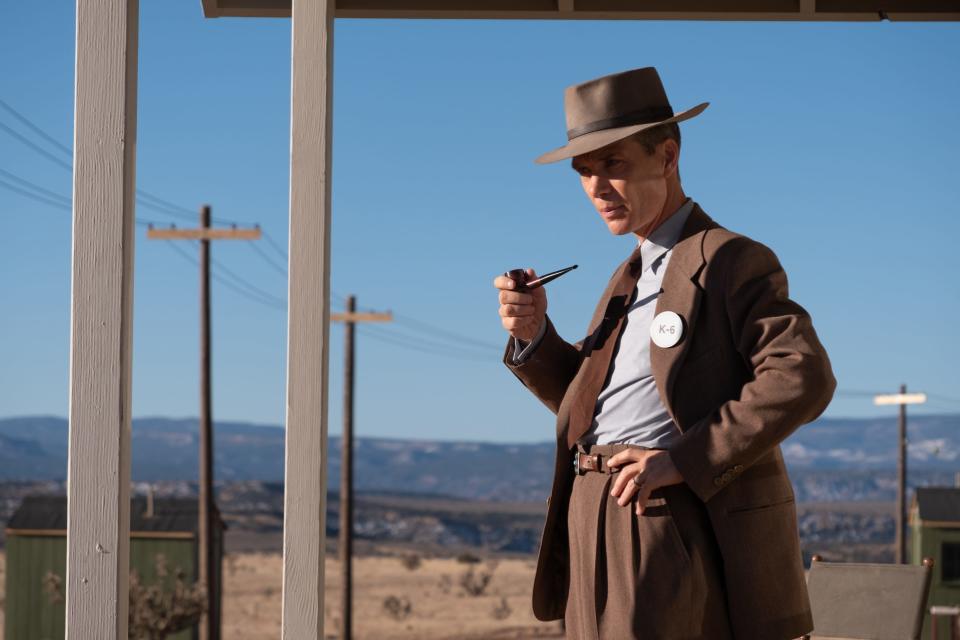Best movies of 2023: Here are John Beifuss' picks, from 'Barbie' to 'Godzilla Minus One'
When the Diablo Cody-penned “Lisa Frankenstein” opens Feb. 9, it will mark another confident if lumbering step on what has been one of the more remarkable if least remarked-upon paths in recent cinema.
By that date, at least six feature films offering woman-centered and in most cases woman-imagined variations on the “Frankenstein” story will have arrived in theaters in Memphis and across America.
The strange, unexpected parade began Jan. 6 when the toy robot doll “M3GAN” (pronounced “Megan”) first stormed the box office and strangled its maker (played by Allison Williams).
The movies that followed included “The Angry Black Girl and Her Monster” (June 9), in which a teenage genius in a Charlotte housing development resurrects her gang-murdered brother; Laura Moss’ “Birth/Rebirth” (Aug. 18), in which a hospital pathologist played by Marin Ireland reanimates a maternity nurse’s dead daughter; and “Poor Things” (set for Dec. 22), which casts Emma Stone as the initially monstrous but ultimately transcendent creation of a scar-faced mad scientist.

First published in 1818, the novel “Frankenstein” was written by 20-year-old Mary Shelley; these new movies represent in part a reclamation of Western art’s most enduring monster figure by members of Shelley’s sisterhood, after a cinematic century of sometimes abusive male stewardship that emphasized the gruesome and violent aspects of the original author’s high-minded parable.
James Whale’s 1935 masterpiece “Bride of Frankenstein” addresses that very dichotomy in its opening prologue, which casts Elsa Lanchester as Mary Shelley, defending her tale as a “moral lesson” while her male companions “relish” its “horror.” In similar fashion, Greta Gerwig’s “Barbie” casts Rhea Perlman as Ruth Handler, the inventor of the Barbie doll, who provides wise counsel to her distressed creation (Margot Robbie), hounded by a male mob.

In fact, Barbie might be the grand marshal of 2023’s parade of Frankensteins. A candy-colored comedy about a living doll, the year’s most successful movie — at the box office and maybe even artistically — was another story of an ostensibly inhuman invention discovering and asserting its humanity (hence, Barbie’s triumphant “gynecologist” joke).
“Barbie,” which arrived July 21, is also about “breaking out of the box,” in this case literally (in one scene, Mattel’s board of directors tries to trick the doll to return to her packaging). A complement to the “Frankenstein” theme, this idea of liberation through self-realization — explicitly dramatized during a production number in “Taylor Swift: The Eras Tour” in which the pop star’s dancers are confined to translucent toy packages — motivated many of the year’s impressive films, including a biopic, “Priscilla,” with Cailee Spaeny as the schoolgirl trapped within her Graceland dollhouse; social dramas that addressed the challenges of young motherhood in so-called underclass environments, including “A Thousand and One,” “Earth Mama,” and the Indie Memphis-abetted “All Dirt Roads Taste of Salt”; the brash R-rated comedies “No Hard Feelings” and "Bottoms" (which, like "Barbie," climaxes in a public brawl involving preening men); the celebrity documentaries “The Disappearance of Shere Hite" and "Little Richard: I Am Everything"; the creative trans documentary, “Orlando: My Political Biography"; a faithful Young Adult novel adaptation, "Are You There God? It's Me, Margaret"; and another concert documentary, "Renaissance: A Film by Beyoncé" ("I have transitioned into a new animal," says the singer).

The ideas expressed in these films seem particularly pertinent in the context of court rulings and political movements calculated to limit free thinking and bodily autonomy (the scientist in "Birth/Rebirth" culls stem cells from pregnant women for her experiments). Although it was set a century in the past, no movie was more timely in this regard than Martin Scorsese’s fact-based “Killers of the Flower Moon," which presents America as a gangsterville operated by greedy white male supremacists whose campaign of exploitation and genocide against Native American women in particular is accompanied by all the glad-handing and false smiles of a political campaign.
ENTERTAINMENT NEWS: Terrence Howard spins songs and yarns at 'Showdown at the Grand' premiere in Memphis
If "Killers" investigated the reality of mass murder, other films evoked the threat of mass extinction. Duck-and-cover school drills may belong to the past (even if our current “active shooter” drills show we have made no progress), but the mushroom cloud spawned by the Manhattan Project continues to cast a large shadow. The origin of this planetary existential threat motivates Christopher Nolan’s "Oppenheimer,” with Cillian Murphy as the physicist-mastermind of the project that developed the atom bomb, a man who quotes Vishnu and seems himself otherworldly. Meanwhile, atomic testing is played for uneasy comedy in Wes Anderson’s “Asteroid City,” a lapidary ensemble piece of orbiting systems that illuminate and influence each other like the heavenly bodies that captivate the story’s cast of Junior Stargazers: It’s a movie about a TV show about a documentary about a fictional play etc. etc.

Also re-emerging from the threat of atomic holocaust was history's most enormous movie star. The charge that “Godzilla Minus One” carries “the stink of seriousness” (in one critic’s words) is not invalid, but so what? — It was only their cultural and genre prejudices that prevented Western critics from recognizing how deathly serious the first “Godzilla” was when it arrived here in 1956.
Written and directed by Takashi Yamazaki, the 33rd film in the series from Japan’s Toho Studios demonstrates the monster’s resilience; the symbol of nuclear annihilation is here the expression of a surviving kamikaze pilot’s death wish, manifested by the guilt, terror, shame, trauma and alternating extremes of cowardice and bloodlust that accompany participation in not just war but in peace — in life. In any event, Godzilla’s ferocious Tokyo rampage, accomplished via newfangled digital effects but accompanied by Akira Ifukube’s classic music, widened my eyes, dropped my jaw and dare I admit gladdened my monster-loving heart.
The worthwhile movies cited above represent just a handful of the several hundred new titles that screened in Memphis in 2023, in theaters, at museums, in outdoor spaces, and in film festivals. Hundreds of additional movies debuted on various streaming services, in a stream that is more a cataract — so relentless that not even the most dedicated film buff or cinephile can keep up.

As is true every year, I have yet to see many of the past year's lauded movies, notably the foreign-language films and documentaries that have yet to reach Memphis or my television. Nevertheless, here — culled from more than 40 candidates, including some movies mentioned above — is my annual attempt to reckon with some of the "best" and some of my favorite films of 2023, in the form of a Top 25 list that, if history is a judge, I will long to change and rearrange the moment I hit "send" on my laptop.
ENTERTAINMENT NEWS: Craig Brewer to produce Muhammad Ali-connected crime series starring Kevin Hart
John Beifuss' Top 25 movies of 2023
"Barbie." The unreconcilable tension between artistic intention and corporate agenda that permeates the project as inescapably as the color pink amplifies rather than invalidates Gerwig's achievement.
Todd Haynes' tabloid-operatic "May December."
"Asteroid City."
Lila Aviles' "Tótem," a child's-eye-view day-in-the-life, from Mexico.
"Killers of the Flower Moon."
"Oppenheimer."
"Passages," from Memphis' Ira Sachs, with Franz Rogowski, in what might be the performance of the year, as a film director who suggests both the mongoose and the cobra.
Yorgos Lanthimos' "Poor Things."
C.J. "Fiery" Obasi's inky "Mami Wata," from Benin, an Indie Memphis Film Festival selection inspired by African folk legends of a mermaid god.
Raven Jackson's stunningly beautiful made-in-Mississippi "All Dirt Roads Taste of Salt," with catfish in lieu of madeleine.
Chad Stahelski's also stunningly beautiful "John Wick: Chapter Four," a musical choreographed to gunfire.
"Godzilla Minus One."
Sofia Coppola's "Priscilla."
Emma Seligman's "Bottoms," which pulses with energy, personality and a scrappy New World Pictures vibe.
Savannah Leaf's "Earth Mama."
Sam Wrench's "Taylor Swift: The Eras Tour," a purposeful spectacle that thoroughly enthralled this non-Swiftie.
Japanese animator Hayao Miyakazi's likely swan song, "The Boy and the Heron."
Daniel Goldhaber's eco-thriller "How to Blow Up a Pipeline."
Hong Sang-soo's vertical loop of a narrative, "Walk Up."
Michelle Williams-vs.-herself in Kelly Reichardt's "Showing Up."
The sincere, expertly wrought old-school movie virtues of Alexander Payne's "The Holdovers."
Tina Satter's "Reality," a docudrama that recreates the FBI interrogation of whistleblower Reality Winner (Sydney Sweeney) with clammy Soderberghian efficiency.
Justine Triet's Cannes-approved murder-trial suspenser, "Anatomy of a Fall."
Monica Sorelle's "Mountains," a drama of demolition/gentrification in Miami's Little Haiti.
Amanda Kim's documentary "Nam June Paik: Moon Is the Oldest TV," about the "father of video art," whose towering "Vide-O-belisk" was for years the centerpiece of the Memphis Brooks Museum of Art rotunda.
This article originally appeared on Memphis Commercial Appeal: What are the best movies of 2023? Here are John Beifuss' picks
